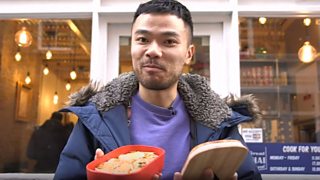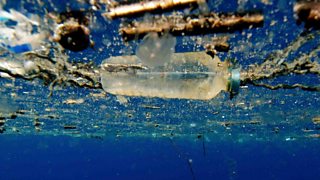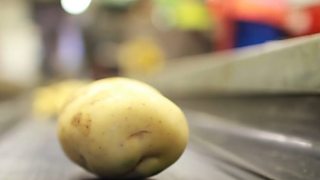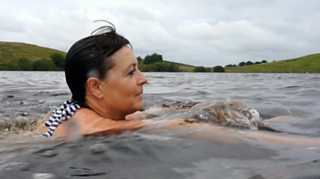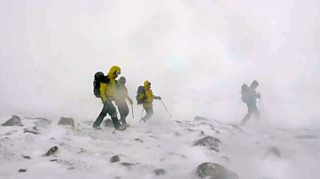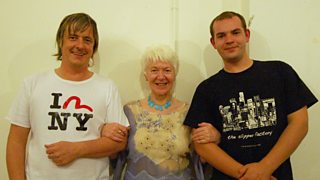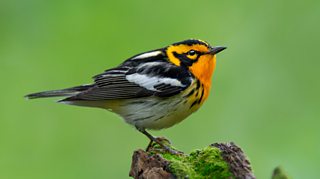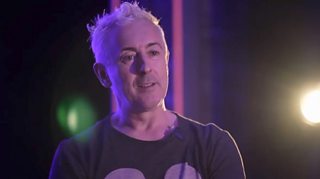Plastic’s fantastic alternative — how a delicious crustacean could hold the key to reducing the pollution clogging up our oceans
11 June 2018

Disposing of plastic packaging waste is not just expensive, but a missed recycling opportunity too.
And a lot of what isn’t disposed of properly can end up in the ocean, causing “irreparable damage” to marine life.
The Landward team met scientists in Oban who are using a byproduct from scampi production to create what they describe as a solution to both problems.
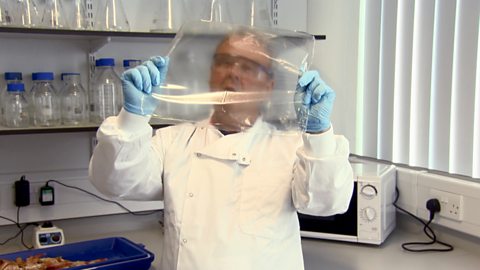
Langoustines and plastic
Euan is in Oban to see how a new alternative to plastic is made
Your new favourite langoustine recipe *
* Neither try this yourself nor consume the results.
- Grind up langoustine shells to create a paste.
- Ferment that paste for two days.
- Spin it in a centrifuge for five minutes to separate out a substance called chitin — a bipolymer which is found in all crustaceans, insects and fungi.
- Dissolve the chitin to form chitosan.
- Pour onto a flat surface and leave to dry.
- Once dry, peel away the final product: a layer of bioplastic, compostable film.
Various natural substances can be added to at the chitosan stage to produce a final product that’s either flexible rigid plastic.
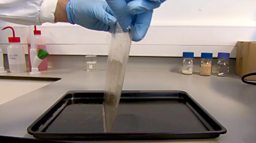
The biofilm that fights bacteria
“[The chitosan] actively kills bacteria,” explained chief scientist Ryan Taylor. “It makes food last longer and reduces food waste.”
He demonstrated by comparing two petrie dishes contained a sample of salmon five days past its sell-by date.
The normal plastic dish contained a large build-up of bacteria, which Ryan described as “pretty mingin’*” and something that “would make you ill.”
The chitosan dish, however, contained noticeably smaller build-up.
According to the scientist, stopping the growth of bacteria allows for food stored within chitosan to last longer, therefore reducing food waste.
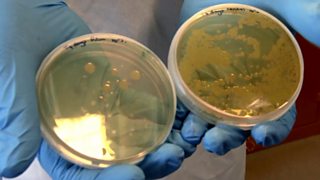
If you compare them both, it’s just absolutely astoundingChris Taylor, scientist
* Not scientific terminology
Latest features from ≥…»ÀøÏ ÷ Scotland
-
![]()
'Wild swimming helps me process the grief of losing my son'
The benefits of cold water therapy.
-
![]()
Winter adventures are appealing, but an expert advises caution
Trips in winter require particular knowledge and skills.
-
![]()
The rescuers: Why volunteers risk their lives in mountain emergencies
Landward meets members of the Cairngorm Mountain Rescue Team.
-
![]()
‘Look for the light’ – practical tips to help you through another winter with SAD
Useful advice and tips to combat low moods at this time of year.
-
![]()
How you could be a binge drinker without even knowing
Binge drinking is classed as fewer units than many people may realise.
-
![]()
How chocolate biscuits and drama classes helped one man leave prison behind
The healing power of creativity.
-
![]()
'When people believe in you, it’s life-changing'
Author Graeme Armstrong revisits the man who helped turn his life around.
-
![]()
The 'breath-taking' display of US birds swept on to British soil
Recent storms have brought rare birds to our shores.
-
![]()
Six things we learned about Alan Cumming on Take the Floor (Spoiler: includes accordions)
The actor spoke to Take the Floor's Gary Innes.
-
![]()
How street gangs trap young men in a dangerous cycle of violence
The almost inescapable pull of life in a gang.
-
![]()
Why stylist Gok Wan believes there's no such thing as bad fashion
The fashion expert says we should stop following rules and do what feels right.
-
![]()
Is sending a CV still the right way to apply for a job?
They've been central to job applications for years, but are they worth it?
